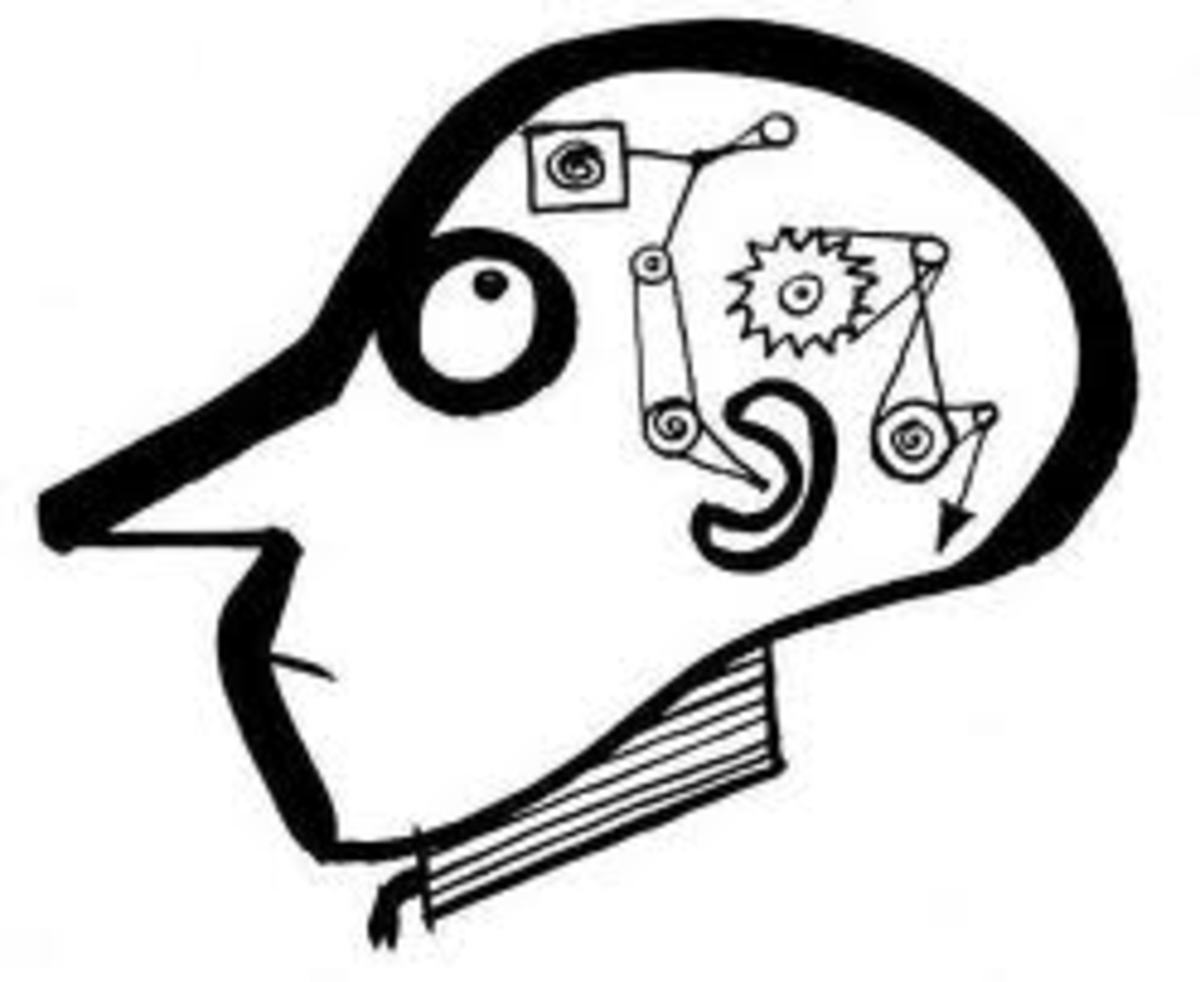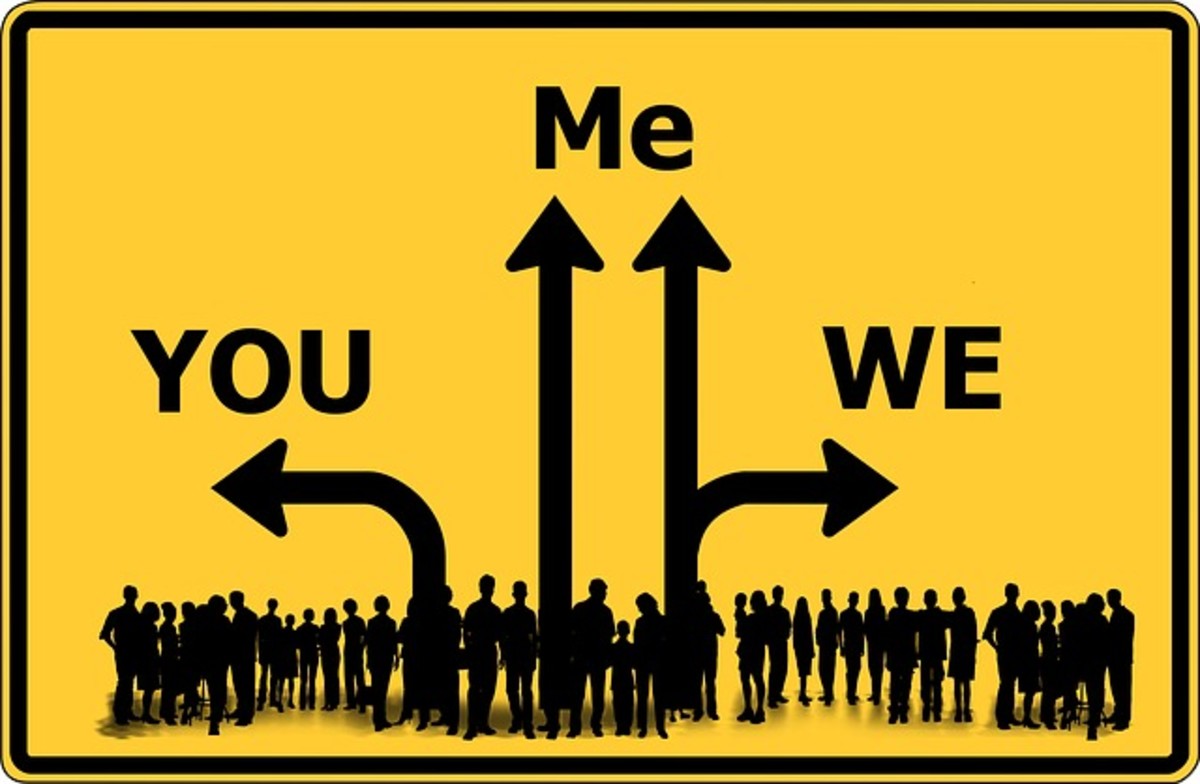It's All About Perspective. Or is it? The Temperament, Personality, Happiness Link...Is Happiness Really A Choice?
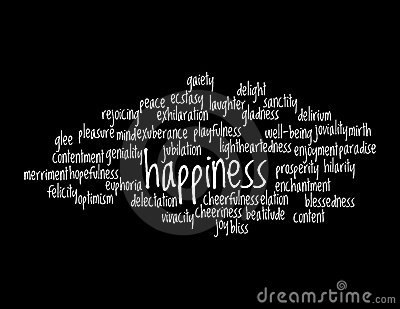
Is Happiness A Choice?
Happiness. Does one choose to be happy or it this something that people have little or no control over? This question can become quite a heated debate among many people on both sides of the issue. Looking at a poll on debate.org, the question posed was “Is happiness a choice?” (http://www.debate.org/opinions/is-happiness-a-choice), so far 43% have voted yes and 57% say no. Why are the percentages for and against happiness as a choice so close? Those who believe it to be a choice are adamant about this belief as are those who are against it. Could it possibly be true that both sides of this debate may be correct?
Perception of Happiness
Being happy and trying to maintain that state is quite complex since humans are just that- very complex. There are so many factors that would play into one's “happiness” in life. One thing to consider in this debate is a person's perception of happiness. How is happiness defined by an individual? Some people may describe happiness as an exciting feeling while others believe it to be a more calm or peaceful feeling. What do people believe they need or want in order to be happy? There are those who tie happiness to success in life. Others equate happiness to material and monetary gain while on the opposite side of the spectrum are those who find happiness in maintaining positive relationships and in helping people and the world. Still others may be happy simply because they are alive, not in pain, and/or have the realization that being happy is seeing the positive (and maybe even humor) in any situation, bad or good, so that one can learn and grow from every life circumstance.

Intrinsic Versus Extrinsic Goals
Looking at it this way, happiness can be split into two categories that are based on the types of goals people have—intrinsic and extrinsic goals. Intrinsic goals come from within an individual. Some important intrinsic goals for many people are:
-
seeking an understanding of ourselves through personal growth in determining an answer to the question “Who am I?,
-
building and sustaining close, healthy relationships with others, and
-
helping others and having a want to make the world a better place.
Extrinsic goals are focused on external rewards. This is done through establishing one's image or looking good, earning money (financial success) and material items, and gaining status and power (popularity). These two types of goals are on opposite sides of the spectrum of what humans value. However, which of the two types will engender a long-term feeling of happiness for most people? Intrinsic goals are inherently more satisfying since they are based on the intrinsic psychological needs that all people tend to share. Decades of research has shown that those who are oriented towards obtaining image, money, and status are not only less satisfied with their lives, but they are more anxious and depressed as well. On the opposite side, those who had more intrinsic goals were less depressed and more happy.

Types Of Happiness
Are these the only indicators for happiness? Many do not think so. Morris identifies 17 different happiness types which Furnham and Christoforou (2007) placed into six categories. These categories include escaping reality, pleasures of the mind and the senses, biological happiness, spiritual happiness, competitive happiness, and bipolar happiness. This left three of Morris' types of happiness not in a particular category- selective, target, dangerous. These types of happiness are explained in the table below.
Types of Happiness
Main Category of Happiness by Furnham and Christoforou
| Happiness Type Described by Morris
| Description of Happiness type according to Morris
|
|---|---|---|
1. Escaping Reality
| Comic
| Happiness through laughter; pleasure gained by confronting fears in a secure/safe context (e.g watching a comedy show, riding a roller coaster).
|
Accidental
| Happiness through being lucky; being happy due to an accidental positive event (e.g. finding money, winning lottery).
| |
Fantasy
| Happiness by being a daydreamer; enjoying fiction of some sort and suspending one's sense of reality which causes a feeling of happiness (watching cartoons or films or theatre, reading, storytelling, daydreaming).
| |
2. Pleasures of the Mind and Senses
| Rhythmic
| Happiness through being a dancer; happiness derived from activities that are rhythmic in nature such as music, singing, gymnastics, dancing, acrobatics, athletics- any activity that has a beat.
|
Cerebral
| Happiness through being an intellectual; is obtained from using one's brain where no ulterior motive is involved (card games, computer games, brain teasers, artistic creativity, research).
| |
Sensual
| Happiness through being a hedonist; experience through primary biological pleasures (sexual experience, delicious meal) or other pleasures (bathing, massaging, etc.).
| |
3. Biological Happiness
| Painful
| Happiness through being a masochist; pleasure is received from mental masochism (denying oneself anything that is seen as a form of indulgence and seeing these things as disgusting and evil) or sadomasochistic rituals.
|
Chemical
| Happiness through taking drugs; happiness acquired from a narcotic-induced state through the use of either “hard” or “soft” drugs such as coffee, tea, tobacco, or alcohol.
| |
Genetic
| Happiness through being a relative; happiness gained from falling in love, conceiving, giving birth, successfully raising children, and caring for one's grandchildren.
| |
4. Spiritual Happiness
| Devout
| Happiness derived by being a believer; experienced by those who are deeply religious and having blind faith in a particular religion.
|
Tranquil
| Happiness through being a meditator; acquired through contemplation and isolation from the bothers of the world (reaching a deep inner feeling of non-attachment and freedom by turning in on oneself).
| |
5. Competitive Happiness
| Competitive
| Happiness gained by winning; being happy through great effort to win at the expense of a rival.
|
6. Bipolar Happiness
| Negative
| Happiness through being a sufferer; is felt when there is an occasional interruption in the constant mental anguish, physical pain, or boredom, insecurity, anxiety, or lack of direction felt by the sufferer.
|
Cooperative
| Happiness by being a helper; felt by helping others (cooperative activities, doing good works, and/or helping others).
| |
7. No Category Heading
| Selective
| Happiness by being selective; is dependent on an individual ignoring the difficulties and horrors of life (an individual feeling happy by refusing to acknowledge the problems life gives him or her).
|
Target
| Happiness through achieving goals; is attained through the anticipation of new experiences, projects, goals, and challenges, working with these, and the possibility of successfully reaching those personal goals.
|
Source:
Furnham, A., & Christoforou, I. (2007). Personality Traits, Emotional Intelligence, and Multiple Happiness. North American Journal Of Psychology, 9(3), 439-462.
Choice and the Types of Happiness
When factoring in different types of happiness, would this make for a better case that individuals have more choice in whether they are happy or not? If many of these activities or circumstances make individuals happy, why do they not participate more in the activities that make them happy? Many would conclude that this would increase an individual's level of happiness. Right? Not quite. Several of the above mentioned types of happiness do not necessarily make most people happy, especially in the long-term.
Within the study completed by Furnham & Christoforou (2007), when looking at Morris' happiness types, most of the participants believed that target, genetic, and cooperative happiness were the most important types. Therefore, “anticipating new experiences and challenges, helping others, experiencing deep interpersonal relationships (whether with a partner or family members), and caring deeply for those in such relationships were participants' main sources of happiness...” (p. 457). These moslty align with internal goals. Furnham & Christoforou (2007) also found that participants only noted a moderate importance to selective, fantasy, devout, tranquil, and negative happiness types. Other studies have demonstrated that having an appreciation for what you have, especially when you compare yourself to those who are less fortunate than you, not those who are more fortunate, is a characteristic found among those who are more content and happy with their lives. Therefore, many of the “types of happiness” activities certain people choose to participate in will most likely not improve their state of happiness especially for longer periods of time or give people the desired effect they are truly seeking to be happy in their lives. This is especially true if individuals do not realize the types of activities that will actually result in long-term happiness and do not engage in these types of activities more often.
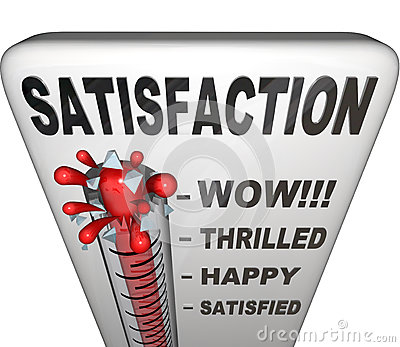
Life Circumstances and Happiness
But what else determines or has an effect on an individual's happiness? Consider an individual's life circumstances. There are those who many would say have it easy in life—money, great childhood, no serious illnesses, lots of friends, great job, etc. These are the people who are most happy in life, right? No, that's not true! These individuals seem to have it all when it comes to the external goals—status, image, and money. Many may conclude that it would be easier for them to engage in the “types of happiness” activities that would keep them more content for longer periods of time, wouldn't you say? However, many of these people are quite unhappy and depressed. Consider the celebrities who have turned to drugs and alcohol, and some eventually suicide. And then there are those who have been dealt more than their fair share of “lumps of coal”—abuse, loss of job, divorce, loss of a loved one, illness, disorders, poverty, homelessness, you name it. Many or maybe most of these people must be miserable! No, that's not true either. Of course there are the scattering of people in between the two extremes on this continuum of life circumstances. What is their level of happiness? But is it really one's life circumstances that determines happiness? Or is it our reaction to our circumstances that determines our level of happiness?
Temperament
This leads to the question of why do certain people react to life's circumstances (or just life in general) in the way in which they do? I believe it has a great deal to do with an individual's personality and temperament. I am unsure how much attention has been given to personality and temperament and the decision to be happy, but I believe it certainly plays an important role. Through my research, more has been devoted to personality and temperament and developmental psychopathology. A person's temperament and resulting personality may affect his or her ability to not only be happy, but to remain happy. They can also influence a person's willingness to work toward his or her happiness.
To examine this, let's consider what the temperament traits are. According to Kurcinka (2003),
"Research has demonstrated that children are born with a tendency to act and react to people and events in their lives in specific ways that can be identified and predicted. The reactions are relatively consistent for each child in different situations and at different times. This preferred style of responding, a child's first most natural way of reacting to the world around him, is called his temperament" (p. 34).
Our temperament depicts an array of different attributes which include intensity, persistence, sensitivity, distractability, adaptability, regularity, activity, approach/withdrawal, and disposition/mood. These were temperament traits originally developed by Thomas and Chess from a study they conducted in the 1950s (De Pauw and Mervielde, 2010). The table below describes the traits and the typical behaviors for the behavior indicator of whether a person is higher or lower within that trait. It is beneficial to see each trait as a continuum and that individuals will fall somewhere on this continuum from one end to the other for each trait.
Temperament Traits and Typical Behaviors
Temperament Dimension
| Behavioral Indicator
| Typical Behaviors
|
|---|---|---|
Activity (energy-level, physical activity)
| High Activity
| High energy; independent; learn by doing; better at gross motor; cannot sit for long periods of time without becoming irritable
|
Low Activity
| Lower energy and may move slower or take time in doing things; may be more dependent on others, especially in children; may excel in fine motor skills over gross motor; can sit still for long periods of time without becoming irritable
| |
Regularity (predictability of behaviors and biological functions)
| Highly Regular
| Eats, sleeps, eliminates on a predictable schedule; adapts to schedules easily; difficulty with changes in schedules
|
Irregular
| Varies in eating, sleeping, and eliminating patterns from day to day; may be disorganized
| |
Adaptability (response to changes within the environment; ease with which an individual adjusts to changes and transitions)
| High Adaptability
| Can shift easily and quickly from one activity/situation to the next; goes with the flow; not easily upset by surprises
|
Low Adaptability
| Difficulty with changes, transitions, & intrusions; need to know what to expect and when to expect it; need structure and routine, upset by surprises
| |
Approach-Withdrawal (first reaction or reaction to novelty; an individual's first reaction to to new places, things, or situations)
| High Approachability
| Attracted to novelty; sociable and outgoing; usually hands-on learners; may be accident prone due to jumping in to new things without thinking
|
Low Approachability
| Shy away from novelty and need time to warm up; experiences difficulty with anything new; prefer things that are familiar; avoid risky situations; learn by watching; are observers
| |
Sensitivity (threshold of responsiveness or amount of stimulation necessary to elicit a reaction; one's sensitivity to physical stimuli such as texture, sound, light, emotions of others, tastes)
| High Sensitivity
| Notice everything using senses; can be bothered by tags in clothing, smells, lights; easily overwhelmed and/or overstimulated, especially in busy environments; very aware of other people's emotions and own feelings can get hurt more easily; often empathetic and conscientious; may experience more pain
|
Low Sensitivity
| Less bothered by sensory stimuli and less likely to get feelings hurt as easily; may experience difficulty reading social cues; more likely to take risks; usually isn't slowed by slight injury or illness
| |
Intensity (energy level of a response, especially emotional responses both positive and negative) **Intensity flags how other temperament traits may be conveyed
| High Intensity
| Powerful reactions for both negative and positive emotions; may be very expressive with emotions; may be seen by others as dramatic or over-reacting to situations
|
Low Intensity
| Reactions to emotions are often subdued; others may not be able to recognize how the person is feeling
| |
Disposition (quality of mood or amount of positive or negative feelings; one's tendency to react mainly positively or negatively to the world) **Disposition is highly affected by other temperament traits
| Positive Mood (Sunny Disposition)
| Reacts to the world in a more positive way; usually in a good or cheerful mood; generally sees things from the “cup half full' perspective
|
Serious Mood/Disposition
| Usually more serious and solemn; notices what needs to be fixed or what could be improved; may see things from the “cup half empty” perspective; may focus on mistakes made rather than successes achieved in a situation
| |
Distractibility (effectiveness of external stimuli in alerting one's behavior or level of focus without external stimuli distracting the individual)
| High Distractibility
| Are often very perceptive; notice everything, but this can cause difficulty with focus; good eye for detail; may become easily distracted and move from one activity to another; multiple directions may be easily forgotten and difficult to follow
|
Low Distractibility
| Have great focus and concentration and are able to block out all stimuli; not as perceptive or notice little details (a new haircut); able to remember and follow multiple directions
| |
Persistence (length of time and maintenance of activity pursued by individual)
| High Persistence
| Need to finish what is started and have difficulty stopping an activity prior to completion; will practice new tasks over and over until mastered; perseveres despite obstacles or difficulties; good at planning; may insist on doing things on own; likes to negotiate; others may see as stubborn
|
Sources:
De Pauw, S. S., & Mervielde, I. (2010). Temperament, Personality and Developmental Psychopathology: A Review Based on the Conceptual Dimensions Underlying Childhood Traits. Child Psychiatry & Human Development, 41(3), 313-329. doi:10.1007
Is happiness a choice?
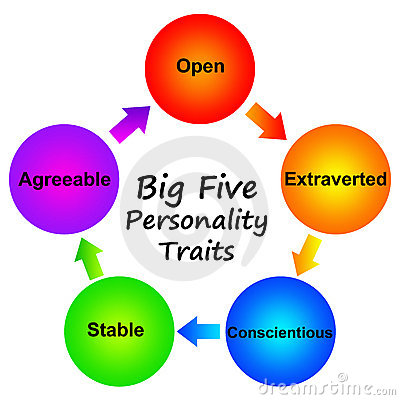
Personality
While temperament is part of the equation in how individuals react to the environment, it is important to remember that both nature and nurture work together to affect a person's personality. The Five-Factor Model is the choice model in personality psychology for the last 25 years. It uses five major elements of the extensive range of normal personality traits in which to classify adults (De Pauw and Mervielde, 2010). These categories are Extraversion versus Introversion, Agreeableness versus Antagonism, Neuroticism versus Emotional stability, Conscientiousness versus Negligence, and Openness versus Closedness to experiences. Some of these personality traits may overlap and are clearly linked to an individual's temperament. Many believe that temperament and personality are more alike than different. This is especially true from the preschool age and on (De Pauw and Mervielde, 2010). Temperament is the biologically-based origin of personality. In this way, there is
“a sequential relationship, with temperament as the affective, activational and attentional core around which more complex personality traits develop over time. The interaction between temperament and environmental influences is then assumed to produce personality, conceived to be wider in scope than temperament, including thoughts, skills, values, defenses, morals, beliefs, and social cognitions.” ((De Pauw and Mervielde, 2010, p. 319).
Below is a table that explains the different categories of the Five-Factor Model using adjective pairs and questionnaire scale definers.
Five-Factor Model of Personality
Factor
| Label
| Adjective
|
|---|---|---|
N
| Neuroticism, Negative Affect vs. Emotional Stability
| Calm—Worrying Even tempered—Temperamental Self-satisfied—Self-pitying Comfortable—Self—conscious Unemotional—Emotional Hardy—Vulnerable
|
E
| Extraversion, Surgency, Social Activity vs. Introversion
| Reserved—Affectionate Loner—Joiner Quiet—Talker Passive—Active Sober—Fun loving Unfeeling—Passionate
|
O
| Openness to Experience, Intellect, Culture vs. Closedness
| Down to earth—Imaginative Uncreative—Creative Conventional—Original Prefer routine—Prefer variety Not curious—Curious Conservative—Liberal
|
A
| Agreeableness, Friendly Compliance, Socialization vs. Antagonism
| Ruthless—Soft-hearted Suspicious—Trusting Stingy—Generous Antagonistic—Acquiescent Critical—Lenient Irritable—Good natured
|
Source:
Costa, P. T., Jr., & McCrae, R. R. (1992). The five-factor model of personality and its relevance to personality disorders. Journal of Personality Disorders, 6(4), 343-359. doi:http://dx.doi.org/10.1521/pedi.1992.6.4.343
The Happiness Formula
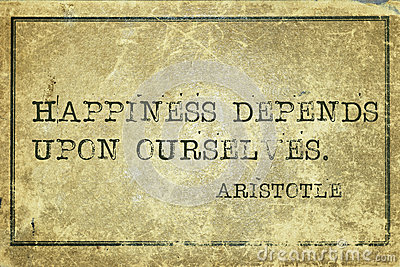
Temperament, Personality, and the Choice to be Happy
So when researching and considering an individual's temperament and personality, it becomes a little more clear to me why certain people are more inclined toward making a cognizant choice to be happy while others are not. Or maybe why many FEEL they CANNOT be happy while others FEEL they CAN, and how it may be that both sides of the debate of whether happiness is a choice may actually have merit. There have been some researchers that have found that personality is a higher predictor of happiness than money, relationships, work, religion, recreation, race, social class, or other outside variables (Furnham & Christoforou, 2007) Let me explain how this can be the case.
Persistence and Conscientiousness
Let's first consider Persistence and Conscientiousness. This is similar to Effortful Control, which was a psychobiological approach of temperament developed by Rothbart and colleagues (De Pauw and Mervielde, 2010). Effortful Control is one's ability to not only focus and shift attention, but to inhibit one's responses and behaviors when needed. Effortful Control has been linked with the symptoms of ADHD, attention deficits and hyperactivity-impulsivity (De Pauw and Mervielde, 2010). Poor attentional control or distractibility relates to deficits in attention and poorer self-regulation tends to be more closely aligned with impulsivity. When one is low on these traits, he or she will not be willing to work as hard (Persistence), cannot work as hard, or simply has a difficult time maintaining a focus (Distractibility/Effortful Control) toward being happy and remaining happy. If it cannot be achieved quickly, this type of person is inclined to give up right away, whereas someone with high Persistence/Conscientiousness and low Distractibility is highly determined to follow through on any goal that is set. This would also be true if a person is already in a depressive state. Those with a low Persistence level will not work as hard to pull themselves out of depression, especially if the strategies used did not work right away. The opposite would be true for those with high Conscientiousness. These individuals would be more willing to work, and work harder, to break the depression cycle and find or use ways of making themselves happier.
Intensity and Agreeablenss
What about Intensity which relates to low Agreeableness in personality? How do these affect one's ability to be happy? I often believe those who are more intense tend to have difficulties developing strategies to cope with their strong emotions. Many of these individuals who do not develop good coping mechanisms tend to be the ones who become less Agreeable and more irritable and antagonistic. With intensity there is a tendency for one to either direct his or her emotions inward (internalizing) or outward (externalizing). There are factors that combine to increase the likelihood of whether an individual will be more likely to develop problems with internalizing (depression & anxiety) and externalizing these emotions (antisocial & disruptive behavior). When an individual has both low Agreeableness with high Intensity and low Conscientiousness/Persistence, he or she is more prone to externalizing disorders. These people are more prone to “reactive aggression” which has anger-irritability at its core (De Pauw and Mervielde, 2010, p. 323), and this can negatively affect their relationships with others. Those who are more reactive in terms of aggression will more likely have lower happiness levels due to this. However, those who are higher on Neuroticism are more prone to internalizing if they are also high on Intensity and low on Agreeableness (De Pauw and Mervielde, 2010). These individuals will be more inclined towards anxiety, depression, fears, and phobias. High or low Conscientiousness/Persistence will determine how much an individual is affected by Neuroticism.
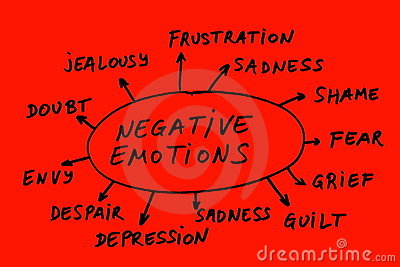
Disposition and Neuroticism
Past research supports that a Negative Disposition/Mood and Persistence in childhood will predict Neuroticism as well as Conscientiousness in adults (De Pauw and Mervielde, 2010). Those who are higher in Neuroticism tend to be more nervous, sensitive, moody, and easily stressed, whereas those with lower Neuroticism are more confident, stable, calm, and have more emotional self-control. Individuals who are more neurotic tend to be more prone to anxiety, depression, hostility, and fatigue/boredom (Furnham & Christoforou, 2007). As stated by Furnham & Christoforou (2007), “The negative affect associated with Neuroticism seems a very powerful predictor of unhappiness” (p. 456).
Approach/Withdrawal and Activity: A Link to Extraversion
Next to consider is Approach/Withdrawal and Activity which can be linked to Extraversion in personality. According to De Pauw and Mervielde (2010), “Sociability and Activity predict Extraversion at a later age” (p. 319). Those who are active and have a higher Approachability tend to be more extraverted than those who are more withdrawn combined with low Activity levels. Those who are less extraverted will tend to experience less positive emotions and are more at risk for depression. There has been a great amount of research to show that Extraversion has been found to be one of the greatest predictors of happiness levels (Furnham & Christoforou, 2007). People who are extraverted tend to be “more involved with people and have a larger circle of friends. They more often engage in rewarding social activities, experience more affection, and enjoy greater social support, an important wellspring of well-being” (Furnham & Christoforou, 2007, p. 456). This supports the findings that both internal goals and Cooperative happiness activities are more rewarding long-term since they promote positive relationships with others. Therefore, the opposite can be assumed with many introverts. When an individual is lower on Extraversion, he or she will not be as likely to engage in or be successful in the Cooperative happiness activities and/or may not set as many internal goals versus external goals that create more fulfilling and long-term happiness. Low Extraversion, especially along with the tendency to experience less positive emotions, is a predictor for depression (De Pauw and Mervielde, 2010). Obviously, it cannot be said that all introverts do not have good relations with others and that they cannot be happy.
Sensitivity
Moving on to Sensitivity. The more sensitive one is to environmental stimuli as well as the emotions of others, the more difficult everyday situations and environments can be. There are some individuals who suffer from sensory processing disorders. This is very evident in those who suffer from neurological disorders such as autism, Tourette Syndrome, ADHD, and OCD. The heightened sensitivity to one's environment causes the individual to become easily overwhelmed and/or overstimulated in crowded and busy places. Many of the individuals can have difficulty developing coping strategies for these sensitivities. This may lead many into secluded lifestyles and can develop into social phobias which will isolate them from others and in turn leads to depression. Once again, an individual may become more introverted. He or she may have difficulty being successful with Cooperative happiness activities or setting internal goals. His or her relationships can suffer which further complicates this sensitivity issue.
Adaptability and Openness to Experience
Now let's take a look at Adaptability. This seems to fit in with Openness to Experience as it pertains to personality. Those who are slow to adapt feel stressed when there are changes in routine, surprises, and with transitions. These can all trigger agitation and irritation, especially for those with higher Intensity levels. When one is more rigid and less flexible or adaptable, he or she is less likely to be willing to make changes in his or her life. This could be true even if it would be for the good that would ultimately result in happiness. Consider when there are significant life changes and surprises that happen quite frequently for an individual. This would have a negative effect on that individual's Agreeableness causing him or her to be more antagonistic and irritable. This type of person has a low Openness to Experience. A person with low Openness to Experience will not be as open to getting help for depression or anxiety through unconventional methods such as counseling, mediation, yoga, etc. Therefore, happiness for a person with this trait can be more difficult.
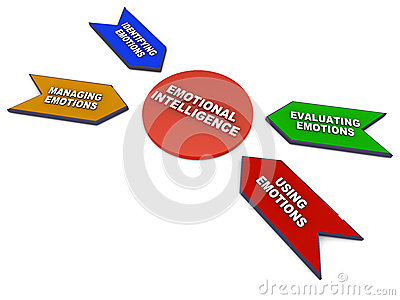
Emotional Intelligence and Happiness
One last finding that is a strong predictor of an individual's happiness is emotional intelligence. Emotional intelligence has been found to have a positive correlation with happiness and well-being (Furnham & Christoforou, 2007). In fact, a study by Furnham & Christoforou (2007) found emotional intelligence to be a striking component of happiness and well-being that is just as important as personality. Those who have higher emotional intelligence tend to be more in touch with their emotions and are better able to regulate them. Therefore, well-being is better promoted for these individuals. People who are more emotionally intelligent tend to be more flexible, can withstand pressure and regulate stress, are empathetic, understand their own and other people's feelings, can influence other people's feelings, and are better at controlling their emotions. These type of people are more upbeat and satisfied with their lives. They tend to look at the life with a “cup half full” perspective. As it relates to happiness, the most important component when looking at emotional intelligence is an individual's ability to not only manage their own emotions, but the emotions of others as well (Furnham & Christoforou, 2007). On the opposite side, those who have low emotional intelligence will not have these capabilities and this will negatively affect their ability to relate to others. Their relationships suffer which in turn also negatively affects their happiness levels.
Is Happiness A Choice For Everyone?
When taken individually, each of the more “difficult” or “negative” personality/temperament traits can be managed when they are paired with more “easy” or “positive” personality/temperament traits explained above. However, when an individual has several, many, or all the more difficult to manage personality/temperament traits, what follows is an increasing likelihood of comorbid complications, problems, disorders, and/or illnesses. Not only that, but it becomes more and more difficult for an individual to make a conscious choice to be happy and work toward remaining happy, especially when negative life circumstances get in the way.
Just having low Persistence/Conscientiousness is not such a bad thing. However, let's add in low Persistence and Conscientiousness/high Distractibility with high Intensity/low Agreeableness with a tendency towards externalizing emotions and behaviors. What if this person is also highly sensitive? The choice to be happy for a person with this temperament and personality becomes more difficult to make without a greater effort on his or her part. Next, combine introvertedness, with this already difficult to manage personality type, along with low Adaptability/low Openness to Experience, and once again the choice to be happy and remain happy in the face of obstacles becomes even more difficult. Should high Neuroticism be tacked on as well? What would this mean for a person's ability to make the choice to be happy? This type of person's happiness will be more difficult to achieve based solely on his or her temperament and personality. What is the likelihood that this person will be happy with his or her life and be willing to work toward happiness, especially if things in life have been and continue to be difficult for him or her? What effect do these temperament and personality traits have on one's emotional intelligence that also contribute so greatly to an individual's happiness? Does it reduce the likelihood of him or her developing a higher emotional intelligence? If that is the case, and emotional intelligence is also low, this is just one more obstacle that keeps happiness more difficult for this person to grasp than others. The ease for which individuals are able to make a conscious choice to be happy becomes much more complicated and difficult as certain temperament and personality traits are revealed. The combination of an individual's temperament and personality traits makes it easy for some to choose to be happy, but for others, it is much more difficult to turn their “lumps of coal” into diamonds. Can it be done for these individuals? I am not one to say yes or no. That is entirely up to them and their ability to work with their temperament and personality to achieve happiness.
"We're all dealt our lumps of coal. What you do with it can turn beautiful."--Plumb from the song Nice, Naïve, and Beautiful

References
Costa, P. T., Jr., & McCrae, R. R. (1992). The five-factor model of personality and its relevance to personality disorders. Journal of Personality Disorders, 6(4), 343-359. doi:http://dx.doi.org/10.1521/pedi.1992.6.4.343
De Pauw, S. S., & Mervielde, I. (2010). Temperament, Personality and Developmental Psychopathology: A Review Based on the Conceptual Dimensions Underlying Childhood Traits. Child Psychiatry & Human Development, 41(3), 313-329. doi:10.1007/s10578-009-0171-8
Furnham, A., & Christoforou, I. (2007). Personality Traits, Emotional Intelligence, and Multiple Happiness. North American Journal Of Psychology, 9(3), 439-462.
How the 9 Temperament Traits Affect Behavior (Temperament Session) retrieved from http://www.montessoritrainingusa.com/sites/montessoritrainingusa.com/files/Temperament.pdf
Kurcinka, M. S. (2003). Raising your spirited child workbook. New York: Harper Collins.
Kurcinka, M. S. (2006). Raising your spirited child: A guide for parents whose child is more intense, sensitive, perceptive, persistent, energetic. New York: Harper Collins.

